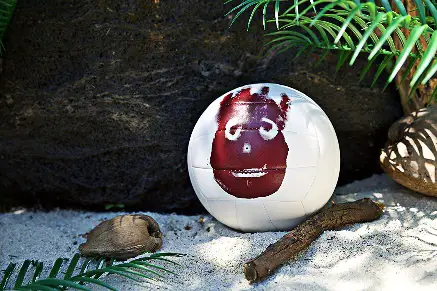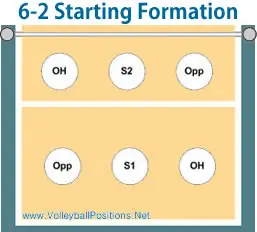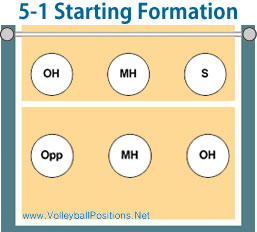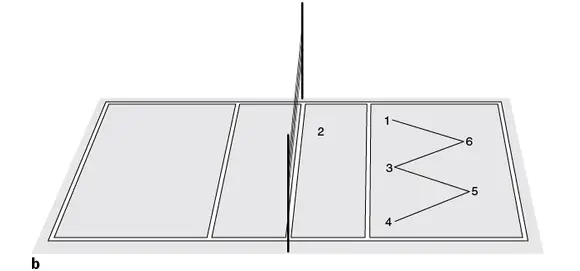For recreation seekers, playing volleyball makes a great hobby as it is both an indoor and outdoor sport. Anticipating the opponent’s next move and working with the team’s dynamics are a hands-on way to learn teamwork, coordination, and communication skills. Whether you play to compete or just for fun, there is nothing like the team adrenaline that comes with an exhilarating game – along with bragging rights for the winner!

Volleyball is a fast-paced game, and each player brings individual strengths to keep up with the flow. Players need to be agile and demonstrate athletic rivalry to progress towards tournaments and championships. Signed volleyballs are excellent souvenirs and help volleyball fans stay motivated. For family games at the beach, customized volleyballs are a definite must-have. As an example, Wilson Cast Away volleyball, inspired by the silent friend from the movie, is available to purchase from online stores and makes a nostalgic tribute for Cast Away fans.
Different Volleyball Positions
Each team has six positions on the court. Players take up roles depending on their individual expertise. Volleyball drills help the players participate in specialized exercises and training routines. These allow teams to hone their skills in various aspects like serving, passing, blocking, and digging. Players get to invest more time in team strategies, and this enables them to get along well with their chosen roles.
1. Outside Hitter
An outside hitter, or left-side hitter, plays at the left antenna and has a crucial role during the offense (when the team has the ball and aims to score). The player is a lead attacker who should be able to play at the front as well as the back row. Good jumping, spontaneity, and adaptive skills are significant attributes for the role. On defense (when the opponents aim to score), this outside hitter often pairs up with the middle hitter to block the incoming shots.
2. Opposite hitter
An opposite hitter, or right-side hitter, plays at the right antenna. Eligible players for this position are always armed with competitive defense-offense strategies. Opposite hitters should also have jumping skills and be able to perform at the front and back rows. They often play as backup setters on offense and are aligned with the opposite team’s outside hitter to block their shots. Most of the blocks are achieved through the opposite-and-middle hitter collaboration.
3. Middle Hitter
If you are the tallest player in your team, then this could be the role for you! Also known as the middle blocker, this player is usually the tallest team member. On defense, middle blockers have central coverage and brace for the incoming middle shots. They can move to the right and left to assist the opposite and outside hitters with double blocks. Middle hitters employ quick attacks on offense to make a score.
4. Setter
This volleyball position serves as the team’s quarterback. A setter will set the offense by directing the aim, making it a key contribution to the team’s offense. For this reason, setters should have strong leadership and communication skills. They are responsible for making real-time decisions that can lead the team to its pivotal point in the game. Setters should also look for the weakest link among the rival blockers and decide the most feasible option. They can perform either at the front or the back row and must prepare to receive a serve, block, and dig on defense.
5. Libero
Liberos play on defense, and they stay in the back row to serve or receive a hit. Naturally, players with strong defensive abilities are eligible for this position. They stand out from the team as they wear a different colored jersey. They often set the ball in case the setter is absent.
6. Defensive specialist
This is also a defense-oriented position, and defensive specialists can step in to replace the back-row player who lacks any necessary skills in the game. League rules determine the number of substitutions allowed. Defensive specialists prepare to play at the front row as well, and they tend to focus on ball control.
Volleyball Formations
In general, there are three volleyball formations using numbers to indicate hitters and setters in the team. The larger number refers to hitters, while the smaller one refers to setters. The standard volleyball formations are the 4-2, 6-2, and 5-1 formations.
The 4-2 formation includes 4 hitters and 2 setters. It is a common volleyball offense for simple, beginner games. The two setters play diagonally apart from each other, and the front row setter is the primary setter. Every rotation keeps one setter in each row; this facilitates hits for the team. The 4-2 configuration makes middle and outside hitters the primary hitters. Due to its basic implementation, the opposite team on defense can often distinguish between the setters and the hitters.

The 6-2 formation has 6 hitters and 2 setters. Three attackers line the front row, and one back-row player comes forward. This configuration helps all the six players to perform as hitters on the court, and two players get to choose to serve as setters. If you are both a good setter and hitter, this will be your time to shine as you can exploit your skillset to maximum benefit. 6-2 differs from the 4-2 formation in that the back setter is allowed to come forward. The 6-2 formation greatly optimizes the offensive potential in the team, adding an advanced level with multiple hitting options.

In the 5-1 formation, there is just 1 setter who stays in the back row, leaving three hitters in front. This is always advantageous, as the setter can pass the ball to any one of the three hitters ahead. When necessary, the setter has the choice to replace any front-row hitter. The team always has five hitters ready for action, and this makes 5-1 a popular offense for competitions.

The W Serve-Receive Formation
The most common pattern for serve-receive formations is the W pattern. In this arrangement, five players are aligned in a “W-shape” for receiving the serve. There are different sub-variations of the W formation:
Its split formation is applicable in cases where the middle player is a strong contender. Right and left slant formations keep setters and quick hitters closer to the net, so you can play to that advantage. Shift left formation is implemented in 5-1 offense with just two hitters in front, whereas the shift right formation tends to be effective with left back row attackers. Deep formation is further away from the net and works efficiently when the front players are good passers. In the down formation, two back players stay at the end line, braced for a deep hard serve. Shallow formation, as the name suggests, allows players to align close to each other, which improves communication in the team.

